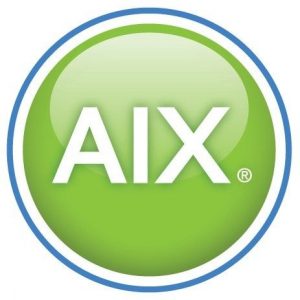About Us
SysAdmins creating software for SysAdmins.
AIX Backup: Why You Need More Than mksysb

AIX Backup Challenges
In our last article, we discussed the challenges of backing up Linux on IBM Power servers. In a nutshell, sysadmins often wish there were a mksysb for Linux—but there isn’t. So they resort to using one of the various backup systems on the market. But most of them provide either data-only backup or image backup, neither of which offers the comprehensive, flexible backup functionality that will fully protect your business. It’s best to go with a file-level backup solution instead.
Now let’s turn our attention to AIX backup. If you’re managing servers that run AIX, you’ve probably come to rely on mksysb as a way to reinstall rootvg to its original state. It’s also a great utility for rolling back your system at any time.
But that doesn’t mean AIX backup should begin and end with mksysb. If you want to build a true disaster recovery solution for your AIX servers, you’ll need to add the right software to your backup mix.
The Shortcomings of Using mksysb for AIX Backup
As we said, mksysb is a very useful utility. But its shortcoming is that it only backs up the root volume group. Sure, it’s good that it backs up your operating system, keeping all your customizations intact—but rootvg is not the entire system. What about the other volume groups? This means that after a server crash, you’ll need to rebuild your other volume groups, logical volumes, and file systems. You’ll need to rebuild the rest of the system before finally copying your data back. So just getting rootvg back means you still have a lot more work rebuilding and fine-tuning to do.
Another shortcoming of mksysb for AIX backup is that, in its essence, it’s a basic command-line utility. You run it manually, and it creates an archive. There’s no automation. No scheduling. No reporting. No retention. And you can’t send your images off to another system. The archive you create goes to either a tape or a mounted drive. But there’s no easy way to transfer your backup from one system to another. To complete all these tasks around your backups, you have to write lots of scripts. It’s doable, but it’s a pain. (And when was the last time you saw someone actually use a tape?)
Now, the network install manager (NIM) can make your life somewhat easier. When you set up a separate NIM server, you can restore your systems over a network. But you do have to configure all the network booting manually. And you have to copy your images or mksysb backups to the NIM server yourself.
There’s more we could say about the manual effort involved in the typical AIX backup, but you get the idea. In fact, you’ve probably lived it yourself. What you need is a solution that goes beyond rootvg and provides powerful automation and scheduling capabilities for the entire system.
A Backup Solution that Gives You File-Level Control
The ideal AIX backup solution will provide complete backup management for your full range of systems, allowing you to manage all backups from a single pane of glass. It will also deliver powerful scheduling, retention and removal features, and in-depth reporting tools.
Although you can restore individual files and directories from a mksysb, it is not an intuitive or an easy task. Having a true file-based backup solution should allow you to easily restore either the entire system or just individual files. As a bonus, a good backup solution will also enable you to work in a modern interface rather than writing scripts.
All of this may sound too good to be true, but you can find it in Storix SBAdmin. (By the way, we integrate with IBM Spectrum Protect, formerly known as Tivoli Storage Manager.) To learn more, visit us online, or speak with one of our disaster recovery experts at (877) 786-7491.
In our next article, we’ll take a closer look at some of the pains of relying solely on mksysb to run your AIX backups.
